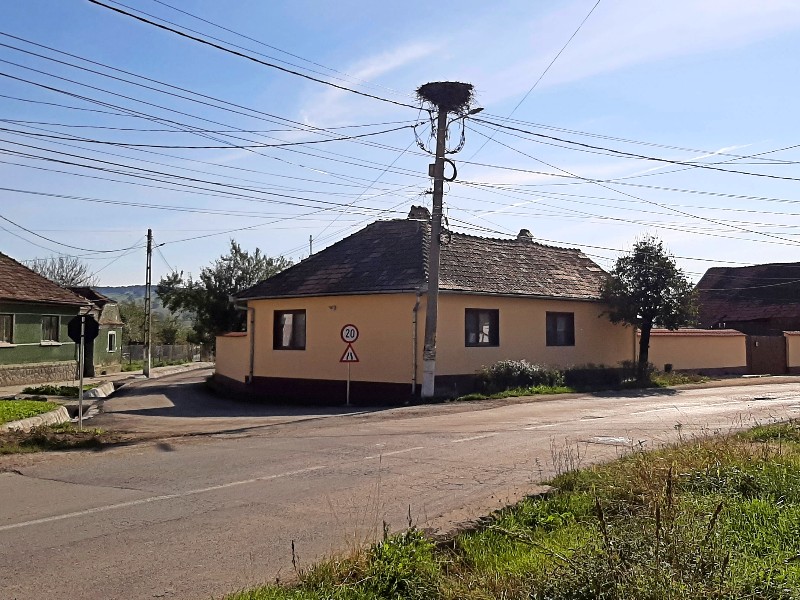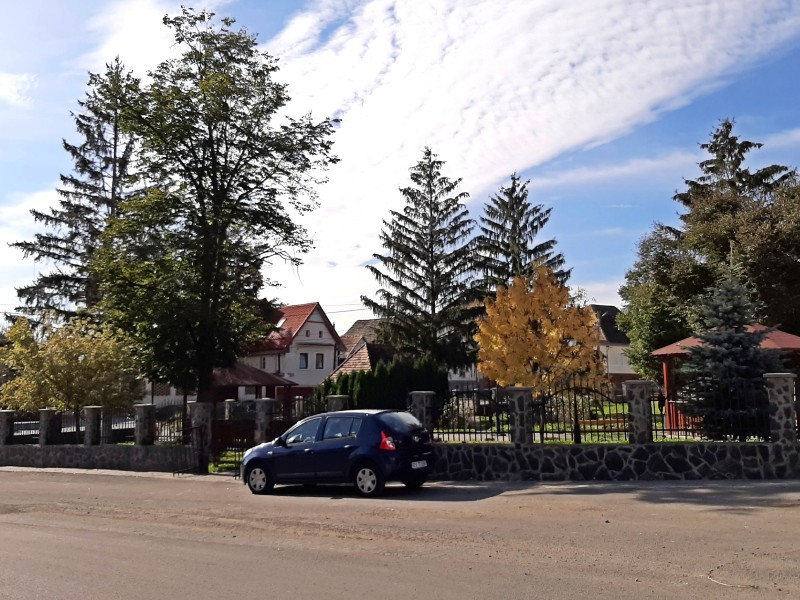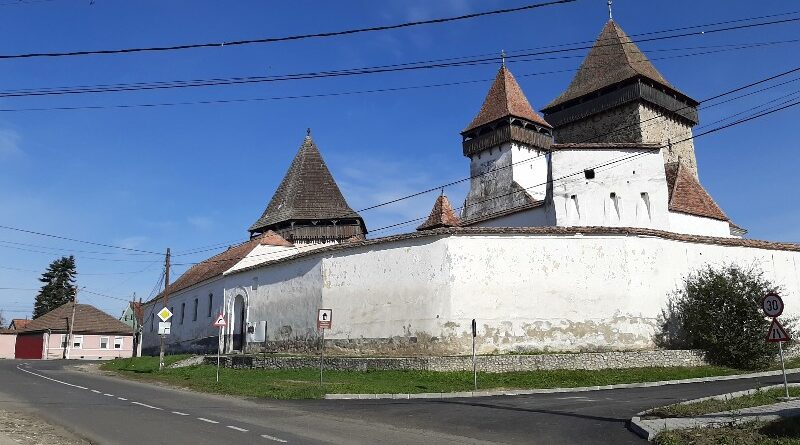The Fortified Church of Homorod (Hamruden), Brasov County
In this destination guide we will visit the fortified church of Homorod (Hamruden).
Homorod
Having visited Rupea Fortress, it was time to hit some more Saxon fortified churches on my road trip across Transylvania. Fortunately, the next fortified church was only a stone throw away from Rupea in the next village of Homorod.
From Rupea, it’s just a 7-minute drive to Homorod, which is located 5 kilometres to the east.
As Homorod is just a small village, there is plenty of parking space just besides the main road. The best place to park your car is around the triangular park opposite the fortified church itself.



Homorod history
Homorod, which is called Hamruden in German or Homoród in Hungarian, has always been a minor settlement. It was founded in the 12th century by Saxon (German) settlers at the confluence of two small creeks which provided a great source of mineral water.
Over the years, the Transylvanian Saxon presence slowly declined. In 1941, just 508 of the 1,503 people living in Homorod were ethnic Germans.
The last Romanian census of 2011 found that only 1.2% of Homorod’s inhabitants were German, with Romanians at 49.3%, Hungarians at 29.9% and Roma at 18.4% making up the bulk of the population.



Hamruden fortified church
The church you see in Homorod (Hamruden) has been built in 1270 in Romanesque style. The fortifications around it, as well as the massive guard tower which rises eight stories above the church, were only added in the 15th century.
There are two layers of walls around the church, with four towers guarding the outer ring of fortifications.
For such a small village, the fortified church of Homorod certainly was a mighty defensive structure.


Visiting the church
Just like so many other Saxon fortified churches in smaller, less-visited towns, the fortified church of Homorod is usually not open.
As is customary, you will instead find the phone number of the caretaker of the fortified church posted at the door, who you then need to call to open the church doors for you.
Unfortunately, when I called the phone number nobody answered.
This was certainly quite a pity as I was looking forward to visit Homorod’s fortified church given that it is famous for its well-preserved Medieval murals in the old choir.
Some of these wall paintings date back to the 13th century and blend Romanesque with Gothic style elements, making them some of the oldest and most unique in all of Transylvania.

Conclusion
The church of Homorod (Hamruden) might be one of the lesser-known Saxon fortified churches in Transylvania, but it certainly does have some unique aspects.
First of all, this fortified church certainly is an impressive defensive bastion, with the mighty guard tower rising eight floors above the church.
Secondly, Homorod’s fortified church has some well-preserved murals in the old choir, with some of these wall paintings dating back to the 13th century and uniquely blending Romanesque and Gothic style elements.
Unfortunately I wasn’t able to visit inside as the door was locked and I couldn’t get hold of the keyholder by phone, but don’t let that deter you if you might find yourself in this part of Transylvania as Homorod’s fortified church is certainly well-worth a visit.
Trip report index
This article is part of the ‘Visiting the Saxon Fortified Churches of Transylvania‘ trip report, which consists of the following chapters:
1. The Fortified Church of Harman (Honigberg), Brasov County
2. The Fortified Church of Prejmer (Tartlau), Brasov County
3. The Fortified Church of Feldioara (Marienburg), Brasov County
4. A Visit to Rupea Fortress
5. The Fortified Church of Homorod (Hamruden), Brasov County (current chapter)
6. Racoș: Exploring an Extinct Volcano and Abandoned Castle
7. In the Footsteps of King Charles: A Visit to Viscri, Romania
8. A Visit to the Fortified Church of Viscri, Brasov County
9. A Night Walk Around the Citadel and Old Town of Sighisoara
10. Review: Hotel Casa Wagner, Sighisoara, Romania
11. The Fortified Church of Saschiz (Keisd), Mureș County
12. The Fortified Church of Cloasterf (Klosdorf), Mureș County
13. The Fortified Church of Mesendorf (Meschendorf), Brasov County
14. The Fortified Church of Crit (Deutsch-Kreuz), Brasov County
15. The Fortified Church of Biertan (Birthälm), Sibiu County
16. The Fortified Church of Hosman (Holzmengen), Sibiu County
17. Review: Brukenthal Palace Hotel, Avrig
18. A Visit to Sambata de Sus and the Brancoveanu Monastery
19. Into the Carpathians: A Beautiful Drive to Moieciu de Sus

